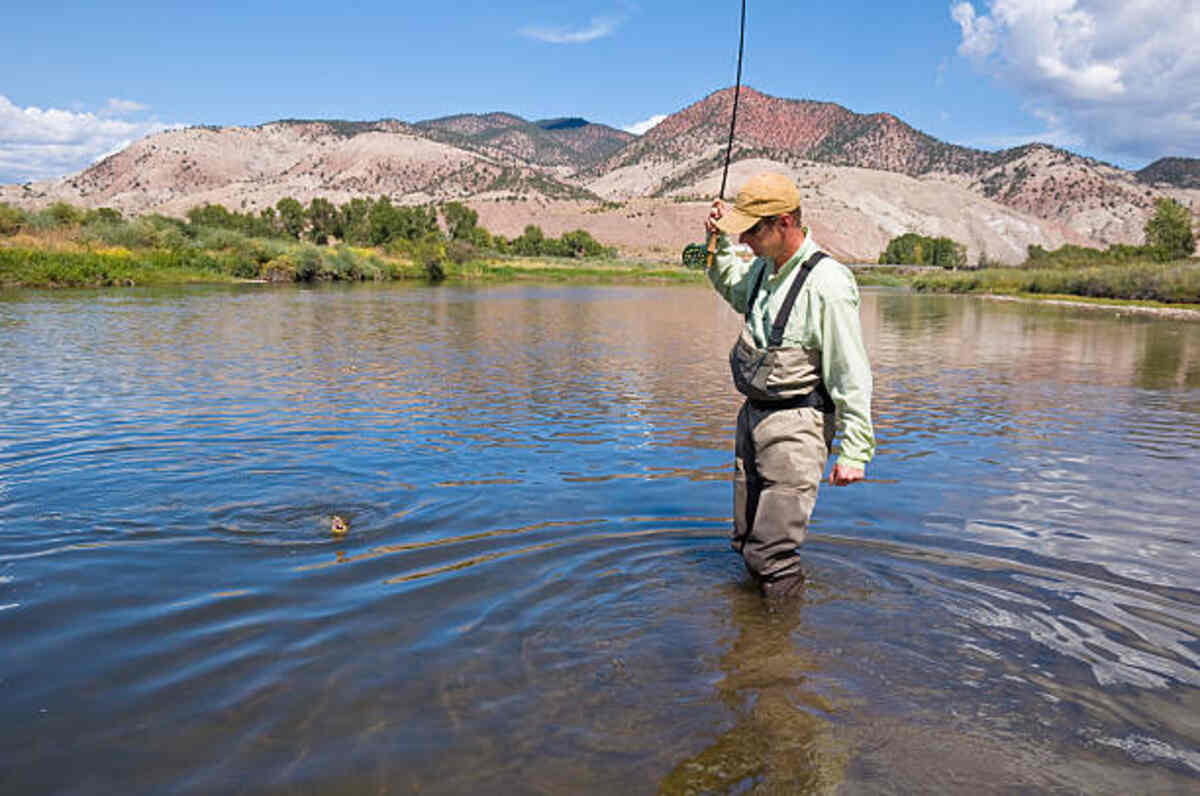Most fly fishers have heard of the Bighorn River. Below Yellowtail Dam, its tailwater has become one of the premier destinations. Unfortunately, its upper 13 miles below Afterbay Access may become overfished during peak seasons.
Flows and temperatures in the lake are ideal for trout. Sow bugs, midge, and baetis flies should all work effectively when nymphing for trout.
Water Temps
The Bighorn River continues to offer excellent fishing, though crowds have begun to reduce for the season. After an incredibly cool fall and temperatures finally dropping significantly, this should benefit fish, watercolor, and the moss on its banks.
At 1800 cfs, fishing in the river has been excellent. Baetis are taking off nicely while trout are feasting on midge, sow bugs, and annelid nymphs; streamers have also proven effective. There has been some floating moss, but not to an extreme degree, between the upper and lower sections.
Flows have been relatively stable over the past several weeks, which is excellent news for both fish and anglers. While flows should decrease soon enough, don’t be surprised if they increase temporarily from time to time, as that has been typical on this river over most of this year.
The final stages of rainbow spawning have come and gone, with most rainbows having completed their eggs. Please refrain from walking on clean patches of gravel that contain eggs, as this will protect these precious fish and prevent unnecessary stress as they lay their eggs – typically, this spawn will last up until November’s end, but its duration really depends on weather conditions.
Water Clarity
Bighorn River is known for its breathtaking scenery, featuring picturesque riffle corners, side channels, and quiet spots that offer unparalleled serenity. Flow rates tend to remain steady while motorized craft are kept out, creating the ideal conditions for an enjoyable float with its protected environment and serene float locations.
Due to its remoteness and protection from motorized craft use, trout populations per mile on the Bighorn are considerably higher compared to many Montana rivers. This, combined with its variety of hatches throughout the year, makes it an incredibly fishable river.
Bighorn River flows are carefully managed in order to prevent their reservoir from reaching too full, which would subsequently compromise water temperature and clarity. As of now, flows remain healthy with plenty of fishing opportunities still available.
The river from Afterbay Dam to Three Mile Access is clear, though as you head further upstream, it begins to become slightly discolored. Crawdads, annelids, tricos, and sow bugs are the primary food sources; occasionally, an occasional hopper might pop in.
Nymphing is the preferred technique on this river; midge, egg, baetis, and annelid patterns work particularly well. Streamer patterns can also be very productive, especially during cloud cover conditions; grasshopper patterns may also work. Finally, dry fly anglers have enjoyed success using PMDs, tan caddis, or Trico patterns.
Flows
Bighorn River flows are at an optimal level for fly fishing. Their high flows create fast-moving currents that dislodge trout food from its resting places on the bottom, keeping trout active and hungry while eliminating moss from river beds and making wade fishing much more straightforward.
Hopper rigs have proven highly successful on the stretches of the Bighorn near Thermopolis, Wyoming. Weeds are beginning to appear but remain manageable on most stretches. Annelids, Trico’s Yellow Sallies, Caddis Flies, and Cranfly Larvae are all getting plenty of bites from trout!
As summer progresses, the Pale Morning Dun hatch will occur on the Bighorn River. Keep your eye out for trout along fast currents near riffle corners and seams, shallow flats, and long runs; PMD nymphs or dry flies should do well during these hatches.
As temperatures cool off, fall fly fishing on Montana’s Bighorn River becomes exceptional. Fishing this technical river takes skill and knowledge, making the Bighorn an excellent place to learn the sport as well as develop your abilities – especially with all those big trout that live there!
Fishing
The Bighorn River is an inviting and clear water fishery perfect for trout anglers. Although not technical in its construction, the river requires anglers to take time to scout its features and understand their impact on flow and currents.
Trout can be found year-round on the Bighorn River, but anglers will find spring and fall to be particularly rewarding for surface-feeding trout fishing. It offers world-class fly fishing destinations for both dry fly and nymphing techniques.
At these times, small nymphs such as Tim Wade’s Northfork Special, Batman, and Gold Ribbed Hare’s Ears will produce consistent trout catches. Other effective patterns are Pat’s Rubber Legs, Copper John, Pheasant Tails, or Pat’s Rubber Legs (for rubber leg fishing). If the trout are not rising yet, try trailing a small nymph behind an insect such as a grasshopper or beetle: when trout approach, they often end up swallowing both.
Terrestrial food sources for trout on the Bighorn River also include terrestrials like beetles, ants, and grasshoppers; all can attract trout. The Bighorn River provides an ideal opportunity for throwing beetle/ant patterns slowly drifting over slack water between riffles.
Flows on the Bighorn River have reached traditional levels, and they remain crystal-clear. Unfortunately, Moss remains an issue and is making nymphing challenging without hitting constant snags.


